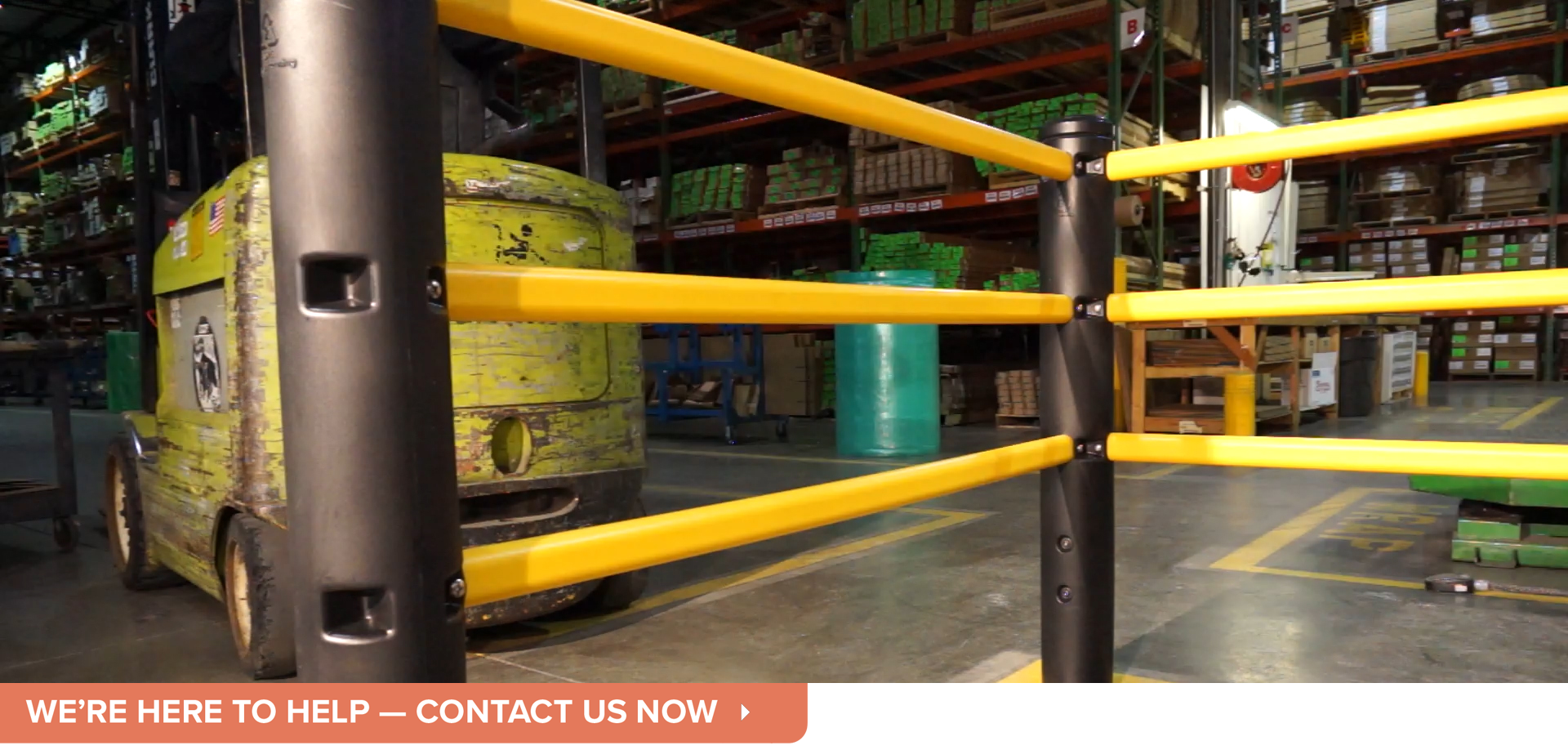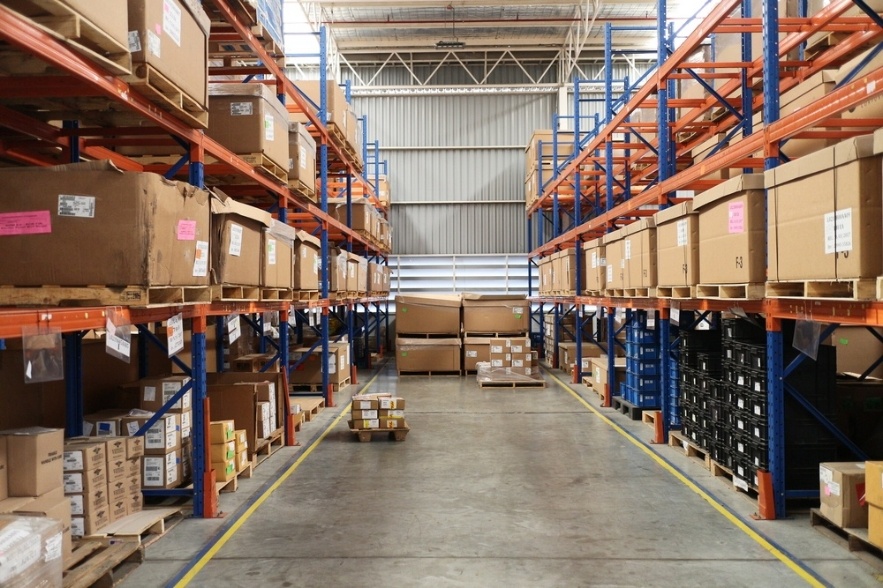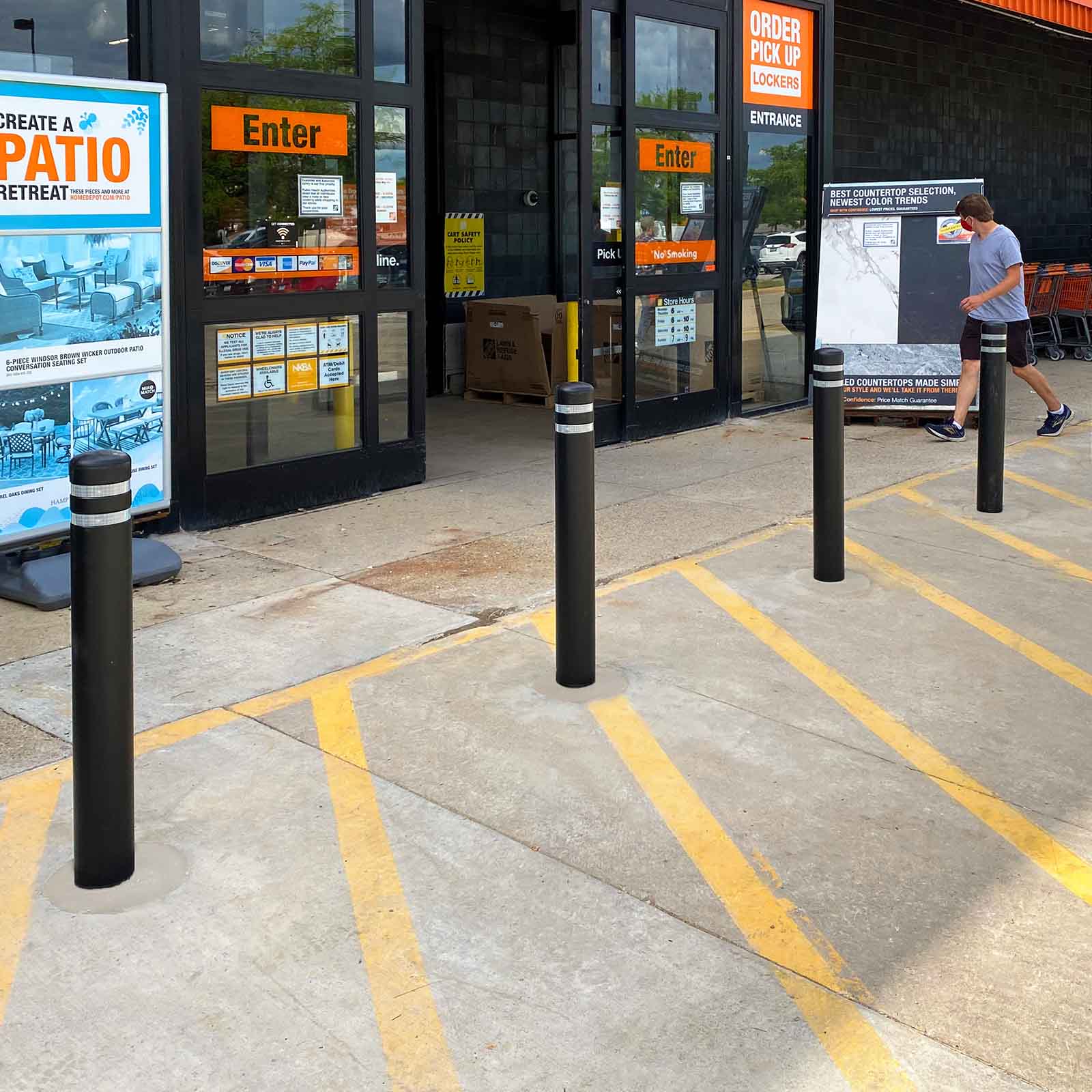Safety Barriers in Warehouses, Distribution Centers, and Manufacturing Plants need to do two things:
- Stop a machine from going where it isn’t supposed to go
- Stop it in such a way that the person operating it remains as safe as possible.
So how do you know if your barriers have the necessary stopping power?
That’s where Joule ratings come in.
For the purposes of a safety barrier – Joule ratings are designed to measure how much impact energy a barrier can stop. The energy is a factor of two variables – how heavy is the impact vehicle and how fast is it traveling. The actual equation is as follows: Kinetic Energy (joules) = ½ mass (kg) X velocity (m/s)2
Let’s apply it to a real world example. If your facility’s largest forklift can have a max mass of 4550 kg when fully loaded and can travel at up to 3.12 m/s (7mph speed governor), then it is capable of hitting whatever it decides to run into with a total force of 22,287J – which is a huge impact! In this particular use case, you’d now know that the barriers you deploy to keep your people and products safe from impacts need to be rated to safely withstand a minimum of 22,300J.
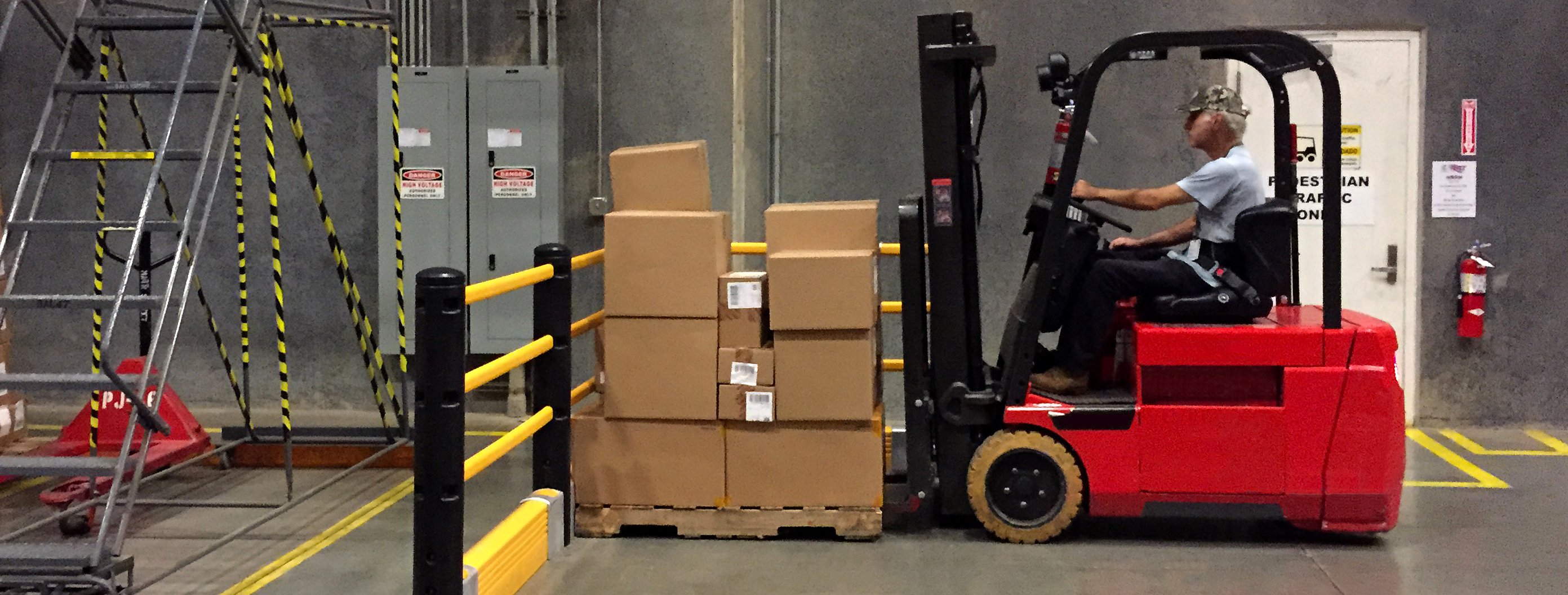
Well, knowing that is only half the battle – now you need to know how to find out the stopping power of the barriers you are considering. This is where it gets a little tricky since most companies would want to make sure they put out as high a number as possible. One way of doing that is to advertise your 45-degree impact rating, which will be higher than your 90-degree impact rating since a glancing blow will transfer less energy to the barrier. Unfortunately, runaway vehicles and unconscious or careless operators don’t adhere to the best-case scenario and are fully capable of hitting a barrier at a full 90-degree direct hit. When it comes to safety you always plan for the worst-case scenario – even if your marketing team would prefer you didn’t.
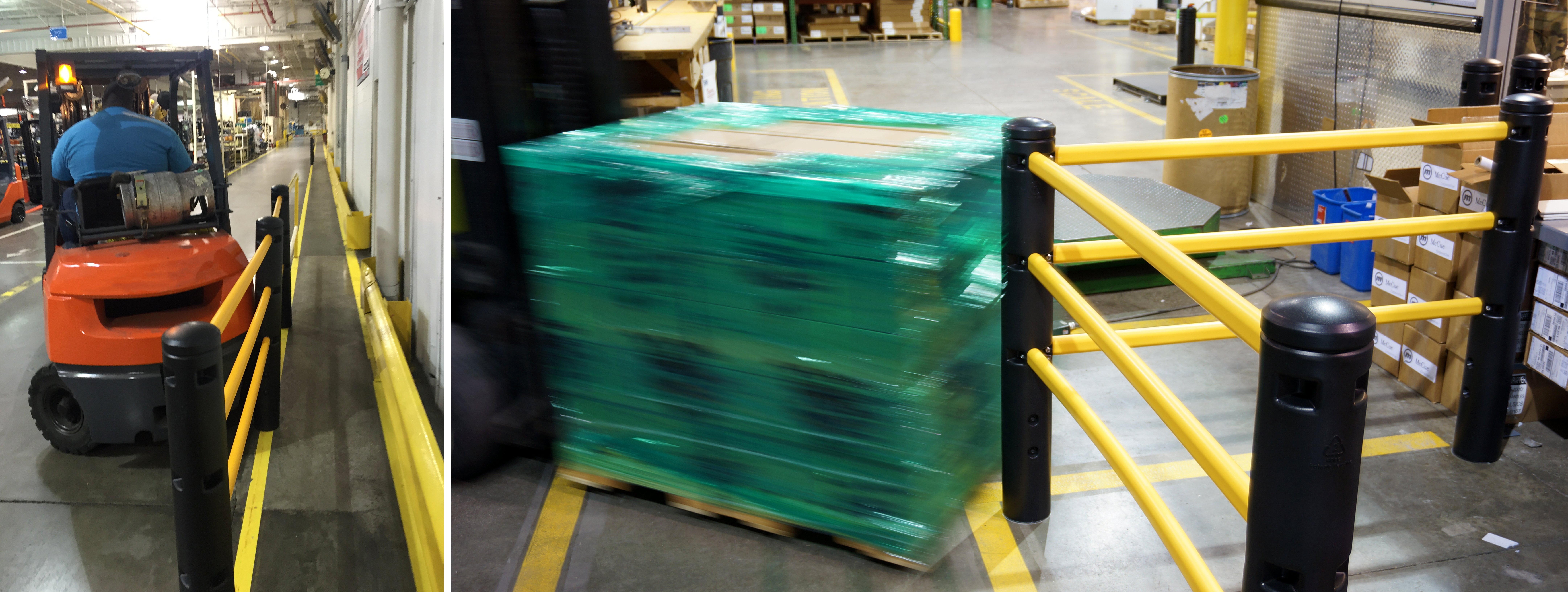
So when you are considering the safety barriers for your new build, or realize you need to upgrade your existing site you need to first determine the Kinetic Energy your vehicles are capable of producing and then selecting a solution that is up to the challenge at a full 90-degree impact. Any other rating methodology is a liability when it comes to safety.
When in doubt, ask a safety specialist at McCue by requesting a safety evaluation!


